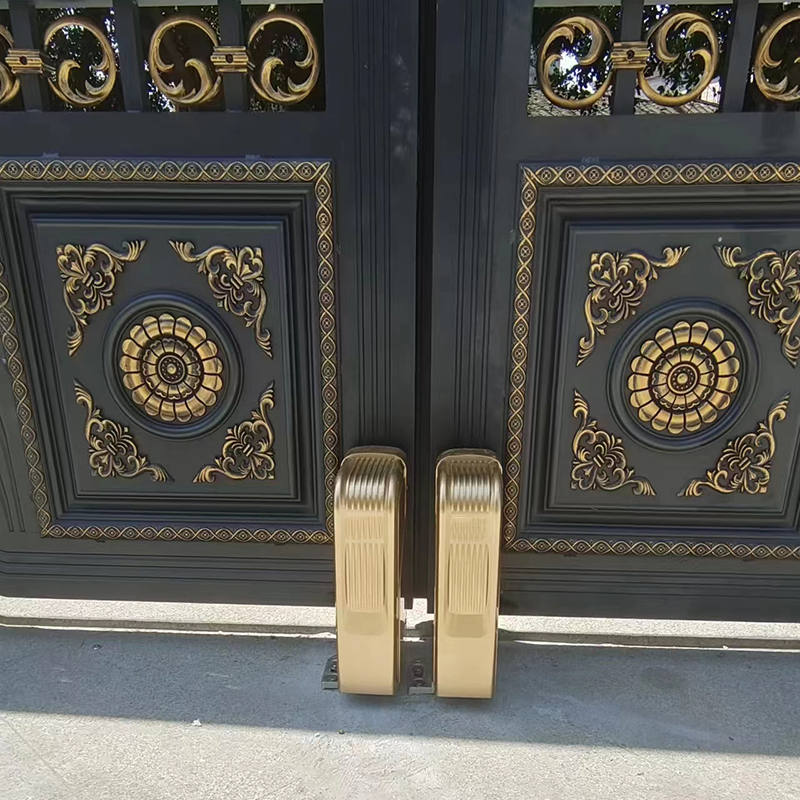Automatic gate openers have become an essential feature for modern homes, businesses, and industrial facilities, offering convenience and enhanced security. A critical component of these systems is the various sensors that ensure smooth operation, safety, and efficiency. Understanding the role sensors play in automatic gate openers can help users appreciate their importance and maintain their system properly.

Safety is one of the primary functions of sensors in an automatic gate opener. These sensors detect obstacles or objects in the gate’s path, preventing accidents or damage.
Infrared Sensors: These use infrared beams to detect objects. If the beam is broken, the gate stops or reverses to avoid collision.
Pressure Sensors: Installed on the gate or the ground, these sensors detect pressure changes caused by objects or people in the gate’s path.
Ultrasonic Sensors: These emit sound waves to detect objects and are particularly useful in low-light conditions.
Prevents injury to people and animals.
Avoids damage to vehicles or other objects.
Enhances compliance with safety standards and regulations.
Sensors are integral to granting or denying access to authorized users. They work with various access control devices to ensure the gate opens only for those with proper authorization.
Proximity Sensors: Detect key fobs, cards, or other devices carried by authorized users.
RFID Sensors: Read radio-frequency identification tags to authenticate vehicles or personnel.
License Plate Recognition Sensors: Capture and analyze license plate data for automatic entry.
Enhances security by restricting unauthorized access.
Increases convenience with automated entry for registered users.
Positioning sensors ensure the gate opens and closes precisely and reliably. These sensors monitor the gate’s position to avoid misalignment or over-travel.
Limit Switches: Detect when the gate has reached its fully open or closed position.
Magnetic Sensors: Monitor the movement of the gate to ensure accurate positioning.
Prevents mechanical strain by stopping the motor at the correct position.
Ensures smooth and reliable operation.
Environmental sensors adapt the gate’s operation to external conditions, ensuring functionality in various weather conditions.
Rain Sensors: Prevent the gate from opening or closing too quickly during heavy rain, reducing mechanical stress.
Temperature Sensors: Adjust motor operation in extreme hot or cold conditions to protect components.
Increases system durability by adapting to environmental factors.
Prevents potential malfunctions caused by harsh weather.
Motion and presence sensors detect movement around the gate, triggering automatic operation. These are especially useful in high-traffic areas or for gates with high-frequency use.
Motion Sensors: Detect movement within a specified range, triggering the gate to open or remain open.
Presence Sensors: Ensure the gate remains open while an object or person is within its range.
Enhances user convenience by automating gate operation.
Reduces wear and tear by minimizing unnecessary gate cycles.
Some advanced systems include sensors that monitor the health of the gate opener’s components. These sensors detect issues such as motor overheating, low battery levels, or mechanical faults.
Alerts users to potential problems before they escalate.
Reduces downtime by enabling proactive maintenance.
Extends the lifespan of the gate system.
Sensors are the backbone of an automatic gate opener’s functionality, ensuring safety, security, and efficiency. From detecting obstacles to managing access and adapting to environmental conditions, sensors play a vital role in delivering a seamless user experience. By maintaining and regularly testing these sensors, users can ensure their gate opener remains reliable and effective for years to come.